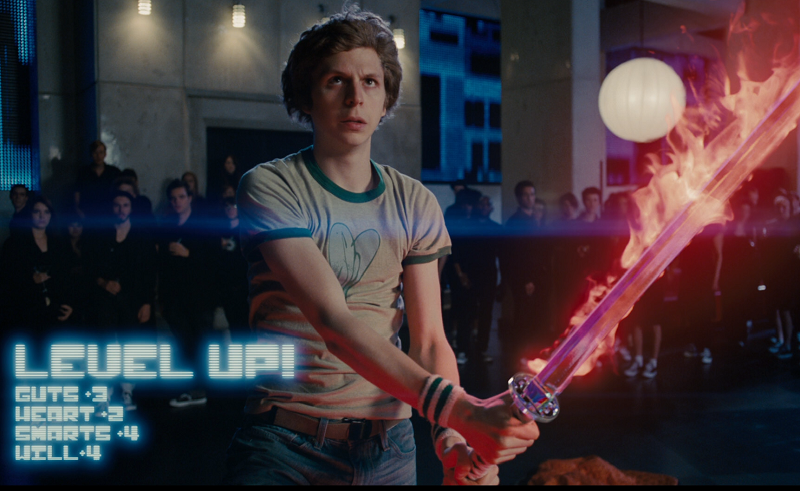Being an accomplished web designer means that you already possess some skills that are not limited to your immediate field of work. As your experience adds up, you become familiar with many edges of the complex process, which the web development is.
“I believe what makes a good web designer is a thorough understanding of design principles, the knowledge of how web pages are constructed, the basics of SEO and knowing how to take the website to the next level.”
--- Jacob Cass of JustCreative (NYC)
However, even if you feel like a web design guru, it does not mean you’ve got nothing left to learn. Stopping where you are will only make you a good web designer, one of the hundreds and thousands. But in order to become a great one, consider “leveling up” into something more.
A Web Designer’s Tech Tree
If it were a video game, we would define three major ‘skill branches’ that are good to consider, once you’ve learned every tip and trick of web development. Each of these branches will shape you up into a professional in a totally new field, and at the same time, will be a great boost if you choose to continue producing websites.

1. ART DIRECTOR
It is said that every private dream to be general, but in reality, very few are actually fit for it. The Art Director is the managing spec for a designer, the person who finds the young talents, helps them grow and molds them into teams capable of producing award-winning digital creations.
This path is full of dealing with other designers, and gathering them around you. One of the common misconceptions about Art Directors is that they manage projects, when in truth, they manage people.
“A good coach is a formidable athlete - yet he never actually enters the pitch. A good Art Director is an authority, but he must resist the temptation of assuming the lead designer’s role.”
--- Olga Shevchenko of Vintage (Kiev, Ukraine)
An Art Director grows from a senior designer with extensive experience of complex, collaborative projects. In order to qualify for this role, you will need to embrace the following skills:
Management. You will have to organize people, set tasks and measure results. You may be familiar with what each of your subordinates is doing, but will have to assemble multiple contributions into a single big picture. A couple of good places to begin would be Principles of Management and Principles of Supervision.
Team building. Having a full clip of capable designers is only a half of your successful project. They have to play as a team in order to achieve the common goal. Here, you will have to maneuver through different tempers and personalities, and learn to distribute the tasks accordingly, and not evenly. There is a wide variety of online courses available on the topic. You may also find this material helpful, for a start.
Human resources. Finding the right people for your web design projects may present a challenge. While there is no lack of willing candidates in this sphere, you will be surprised how few will actually meet your requirements. Learn the basics of employee handling with Human Resource Management, and the more in-depth MIT’s Strategic HR tutorial.
While having mastered the above pre-requisites, you might also want to consider taking specialized Art Director online courses - a fairly good one can be found here.
2. INNOVATOR
The Internet is evolving rapidly - and the pace tends to speed up with every passing year. Web trends come and go, and new techniques and technologies appear in just a snap of a finger. More and more players enter the field, and each one tries to invent something different to attract the audience.
“The web has evolved so much in the last 5 years, yet it's still not being used to its full potential. Recent efforts have made it a decent platform for socializing, leisure, education and sales, but in truth, the web is a blank canvas that provides the ability to create almost anything.”
--- Michael Anthony of Active Theory (Venice, CA).
In order to become a pioneer in new web design technologies and remain one step ahead of the trends that are soon to take over the Internet, consider diving into the following:
- Motion design, also known as Motion Graphics. This is the art of making static objects come alive. The motion graphic is similar to a cartoon, but does not require the actual by-frame drawing. Motion design is the new popular instrument behind presentations and promo clips, and is aggressively rushing into the video production industry. Below is one of the good examples, and there is a category on Behance you can check out for the brightest motion graphics works.
3D modeling. A prerogative of video games up until recently, 3D visualization is firmly changing the face of modern websites. Breathtaking navigational patterns, stunning product rotating effects for online stores and vivid animations that bring a typical website to the new level of visitor perception. The basic software for you will probably be Cinema 4D, which is quick to learn, but hard to master. Some of the brightest 3D works have been, and will be created using this magnificent tool.
AR / VR. This is the field which would be in drastic demand for good specialists in the years to come. Augmented and Virtual Reality is without a doubt, the next big thing in web design.
“VR-optimized websites will allow tremendous possibilities for interactive storytelling. Soon enough we will visit the furniture store online, and see how the chosen set fits in our home right away. In such services, UI is likely to become semi-transparent, and will resemble HUD from first-person shooters”.
--- Eugene Kudryavchenko of Vintage (Kiev, Ukraine)
The recent craze over Pokemon Go seems to be only the start of the hype. Considering this, you might want to research some materials regarding the Virtual Reality for websites, and this article may particularly come of use.
3. MARKETER
Creativity that does not sell may be good for an artist, but not a web designer. If you have mastered the science of creating bright design solutions in a company, and wish to start your own web production business, the time has come for you to learn how to find clients and make them happy with your sites.
In order to start doing that, think of these areas of study:
Traditional marketing. If you don’t have any marketing background at all, a good idea is to begin with the basics. General courses of the Principles of Marketing and Listening to the Customer will do fine here.
Digital marketing. Intangible, web-based products require special marketing approaches. Tweets, reposts, social media linking and the proper use of keywords will ensure that your website is really doing what it was intended for. To begin with, check out these five free digital marketing courses and see if one or two can work for you. Also, the subject is taught by Google itself - subscribe for the Online Marketing Challenge and learn from world’s most renowned tutors!
Copywriting. The design concept, however brilliant, is just a pretty picture without the fitting textual content. Only with the power of word can you truly direct your website into the right canvas. A good place to learn the basics of creative and persuasive writing is the Copyblogger tutorials. To test your current level of skill, you may sign up for a quick copywriting challenge, like this one.
The point of every web development project is to produce a website that would benefit your client’s business for 110%. Make sure that your clients receive no less from your works.
Do not hesitate to go for extra knowledge, experience and skill. This is what makes the best web designers in the world - they never stop at something they’ve already mastered. Good luck in your educational pursuits, and remember that there are no limits for perfection!
As a fun bonus, check out this interactive web developer tech tree: Dungeons & Developers. It offers some pretty good skill builds in a game-like manner. We found it both amuzing and surprisingly well-balanced. Hope you enjoy it, too. Please share your builds in the comments section!

View Comments